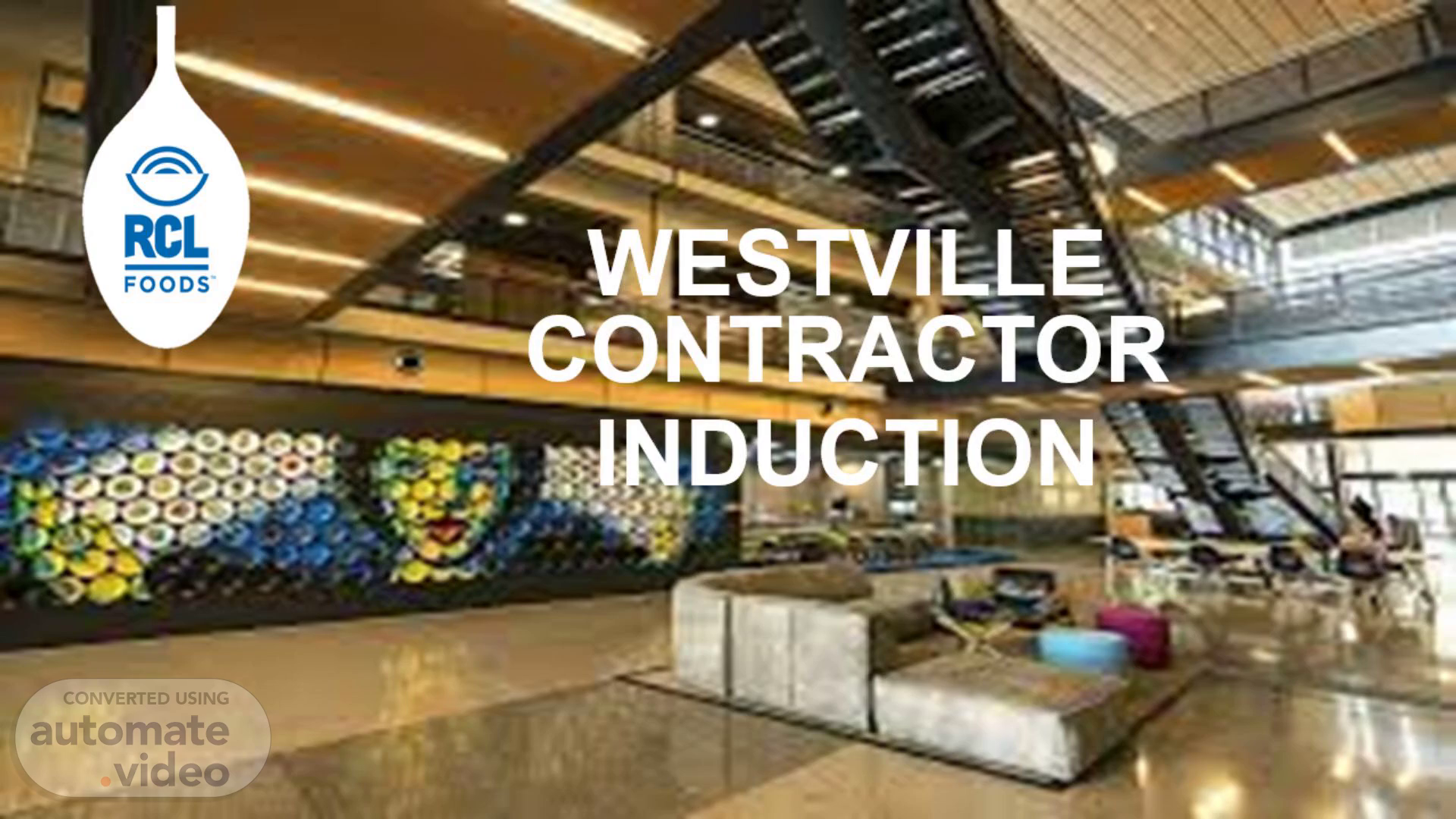Scene 1 (0s)
[Audio] Welcome to the RCL Foods Westville SHERQ Induction. This session focuses on safety, health, environment, risk, and food safety. Our goal is to raise awareness about workplace hazards, safety procedures, food safety, and emergency protocols to ensure a safe working environment and compliance with regulations..
Scene 2 (22s)
[Audio] At RCL FOODS, "Safety: A Way of Life" is more than a slogan—it's our commitment. Your safety is our priority, and we ask that you follow all procedures, stay alert, and take responsibility for your actions. According to the OHS Act: Employers must provide a safe environment, assess hazards, correct deviations, offer training, and enforce rules. Employees must ensure their own safety and that of others, follow procedures, and report unsafe conditions and incidents..
Scene 3 (1m 7s)
[Audio] Contractor management is critical to safety. Before starting work, contractors must submit a SHE file to the facilities team for approval. Once approved, sign in at security. The facilities team will escort you to your work area. No contractor may enter unescorted. If needed, a permit to work will be issued to ensure compliance and safety..
Scene 4 (1m 36s)
[Audio] Building Access: Contractors must be signed in by TSEBO or facilities personnel and wear a "CONTRACTOR" lanyard at all times. Contractors must be escorted to work areas. Parking: Use designated parking only. Reverse park and maintain a 10 km/h speed limit. At RCL FOODS, safety is everyone's responsibility. Your actions help maintain a high-performance safety culture..
Scene 5 (2m 10s)
[Audio] Management must ensure employees have and use the correct PPE. Employees must maintain their PPE and check it before use. All contractors must wear the correct PPE for the job and wear it properly at all times..
Scene 6 (2m 30s)
[Audio] Emergency Preparedness and Response, a critical aspect of ensuring everyone's safety in the event of an emergency. Emergencies can happen at any time—whether it's a fire, chemical spill, or another hazard—so it's essential to know exactly what to do. Step 1: Cease Activities As soon as the emergency alarm sounds, stop all work immediately. Listen carefully and follow the instructions of the evacuation marshal. If it is safe to do so, turn off any electrical equipment to prevent further hazards. Step 2: Exit Workstation Do not attempt to collect personal belongings. Calmly follow the emergency signage to the nearest safe fire exit. Do not use elevators or the main stairway. Step 3: Proceed to Assembly Point Head directly to the designated assembly area, following the evacuation marshal's instructions. Evacuation marshals will sweep the building to ensure everyone has exited safely. Step 4: Roll Call Once at the assembly point, stand in an orderly manner. The facilities team and evacuation marshals will conduct a roll call to account for all contractors and visitors. Responsible managers must ensure that everyone under their supervision has safely evacuated. Step 5: Wait Remain at the assembly point until the Emergency Coordinator gives the all-clear to re-enter the building. Do not leave the area or return to the building until instructed. Important Reminders: - Do not use elevators or the main stairway during an evacuation. - Do not run, shout, panic, or push others. - Stay calm and assist others if needed. Being prepared and following these steps can save lives. Your cooperation is vital in maintaining a safe environment for everyone on site..
Scene 7 (4m 20s)
[Audio] A Permit to Work, is required for high-risk tasks such as hot work, working at heights, confined spaces, and electrical work. Only trained and competent personnel may perform these tasks. TSEBO personnel must issue the permit to work before work begins..
Scene 8 (4m 46s)
[Audio] Report all incidents, accidents, injuries, or near misses immediately to the TSEBO personnel overseeing the work. Ad hoc contractors must report to the site supervisor or safety officer. Prompt reporting ensures timely and appropriate action..
Scene 9 (5m 6s)
[Audio] Smoking and Vaping: Only allowed in designated areas outside the canteen. Waste Disposal: Use proper bins. Do not pour chemicals down drains. Report spills immediately. Electrical Safety: Don't overload outlets. Use cords in good condition. Stair Safety: Use handrails. Don't use phones on stairs..
Scene 10 (5m 37s)
[Audio] Hazard Communication: Clearly mark high-risk work areas. Manual Handling: Use proper lifting techniques. Ask for help with heavy items. PPE: Always wear required PPE. Tools and Equipment: Only use what you're trained and authorized to operate. At RCL FOOD, we have a strict zero-tolerance policy for firearms, weapons, illegal drugs, and alcohol. The presence of such items is prohibited to ensure the safety and productivity of our workplace. Violations of these policies may result in disciplinary action. Our goal is to maintain a safe and productive environment for everyone. FAILURE TO COMPLY WITH ALL RULES AND REQUIREMENTS IN THIS INDUCTION MAY RESULT IN PERSONNEL TO LEAVE THE BUILDING..
Scene 11 (6m 26s)
[Audio] Key safety risks at Westville include: Slippery floors and stairways: Walk carefully, use handrails, and avoid distractions. Fire and emergencies: Know evacuation procedures and assembly points. Elevator use: Do not use during emergencies. Electrical equipment: Stay clear of panels and installations..
Scene 12 (7m 2s)
[Audio] Thank you for your attention. Remember, SHERQ is everyone's responsibility. By following these guidelines, we create a safer, more productive workplace. Stay alert, stay safe, and let's make safety a way of life..
